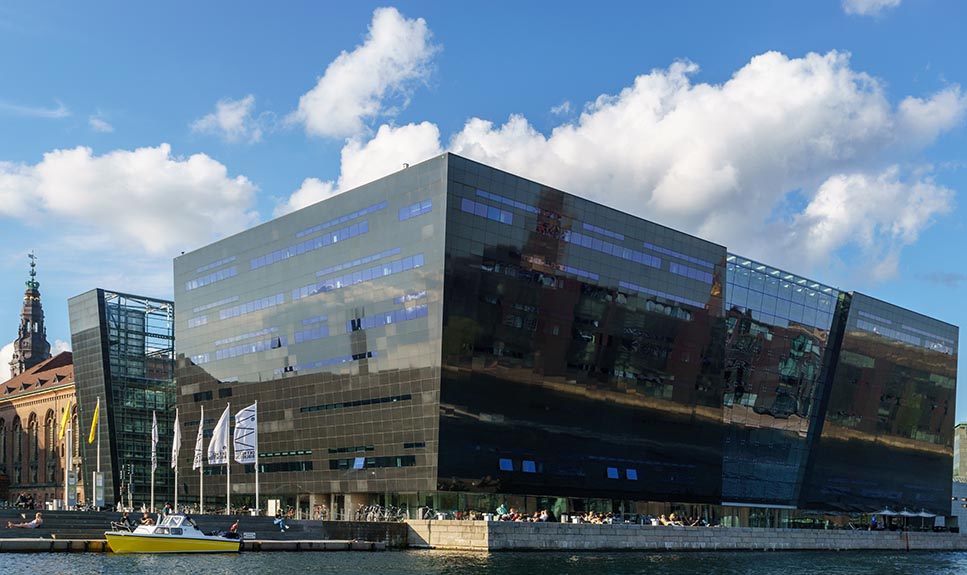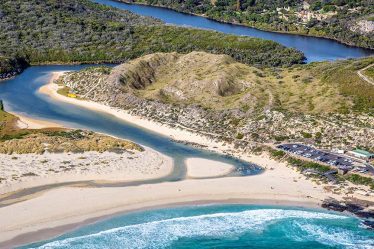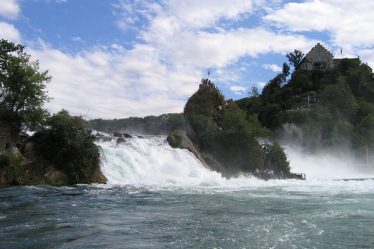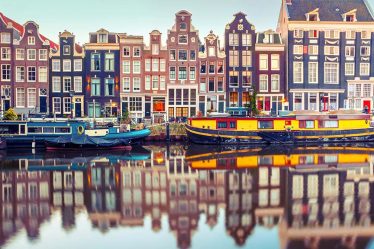
Copenhagen, the capital of Denmark, is a popular destination for travelers worldwide, thanks to its tranquil harbor, pleasant climate, and unique Nordic charm. Most tourists visiting Copenhagen tend to stop by the famous Little Mermaid statue, but this sculpture is far from the only attraction in the city’s harbor area. Today, I will recommend the perfect one-day itinerary that will take you beyond the shadow of the Little Mermaid and along the beautiful coastline of Copenhagen Harbor, allowing you to savor the city’s natural beauty, history, culture, and modern art at a leisurely pace.
1. Starting the Slow-Paced Harbor Journey from the Little Mermaid Statue
Copenhagen Harbor is an important part of the city, not only because of its long history but also for its blend of nature, culture, art, and lifestyle. As a visitor, the best way to experience it is to stroll along the coastline, stopping along the way to soak in the harbor’s unique charm. Although the Little Mermaid statue is undoubtedly the most iconic landmark of the harbor, it is only one part of Copenhagen’s waterfront. To fully appreciate the beauty of Copenhagen Harbor, we start our slow-paced journey from the Little Mermaid statue.
The Little Mermaid Statue
We first arrive at the iconic Little Mermaid statue, the star attraction of Copenhagen Harbor. Although this statue may feel a bit overcrowded due to its fame, it remains a significant symbol of the city. Standing on a rock by the sea, the Little Mermaid gazes out into the distance, making it a must-see for every visitor to Copenhagen. If time allows, take a moment to linger here and reflect on the story and symbolism behind the sculpture.
However, standing before the Little Mermaid statue is just the beginning of this harbor tour. Next, we will explore more enriching experiences along Copenhagen Harbor.
2. Strolling Along the Coastline: Exploring the Art and History of Copenhagen Harbor
After leaving the Little Mermaid statue behind, we head westward along the scenic coastline, embarking on a journey that reveals the layers of Copenhagen’s rich cultural and maritime legacy. This coastal path is more than just a route—it’s a living museum where the past and present meet at every step. Our first stop, Langelinie Pier, invites us to slow down and savor the rhythm of harbor life, away from the city’s hustle.
Langelinie Pier
Langelinie Pier was once a working dock central to Copenhagen’s maritime activity, but today it has been transformed into a vibrant public promenade cherished by locals and tourists alike. The long stretch of boardwalk is lined with charming benches, sculptures, and green spaces, making it an ideal spot for an afternoon stroll or a peaceful break by the sea. As you walk, keep an eye out for traditional Danish ships docked nearby—these vessels are echoes of Denmark’s seafaring heritage. When the sky is clear, the sun reflects off the water in golden hues, and the harbor skyline appears almost painterly. Whether you’re a photographer looking for that perfect shot or a traveler seeking calm, Langelinie Pier offers a unique window into Copenhagen’s waterfront lifestyle.
Visiting the Maritime Museum
A short walk further along the pier brings you to the Maritime Museum of Denmark, one of the country’s most compelling cultural institutions. The museum is housed in a historic warehouse whose architecture retains a rustic charm while embracing sleek, modern renovations. Once inside, you’ll find a treasure trove of exhibits tracing Denmark’s naval achievements—from Viking longships to contemporary cargo shipping. Intricately detailed ship models, antique navigational tools, sailor uniforms, and rare maritime maps bring centuries of sea-bound history to life. The museum’s layout is immersive and interactive, with digital displays, multimedia stories, and hands-on activities for children, making it a family-friendly destination as well. It’s the perfect stop for anyone curious about how the sea has shaped Denmark’s national identity and global connections.
The Black Diamond Library

As we continue our journey along the waterfront, a striking black façade comes into view—The Black Diamond Library, officially known as the modern extension of the Royal Danish Library. This architectural marvel, completed in 1999, is named for its sleek, polished granite exterior that glistens under the sun and glows after dark, truly resembling a giant gem by the harbor. Inside, the space is just as impressive. A vast central atrium with glass walls and elegant staircases creates an atmosphere of openness and light. The library boasts a rich collection of literature, historical archives, and academic works, catering to both serious researchers and casual readers. It also hosts regular art exhibitions, author talks, and live concerts in its elegant performance hall. Even if you don’t plan to read or study, visiting the Black Diamond offers a quiet moment to appreciate Danish innovation in both architecture and public culture. The surrounding harborfront area, with its wide terraces and cafes, is also perfect for a short break before continuing your coastal exploration.
3. Traversing Between Modern Art and History: Experiencing the Multiple Facets of Copenhagen Harbor
Leaving The Black Diamond Library and continuing along the harbor, you’ll uncover more layers of Copenhagen’s rich cultural tapestry. This area seamlessly blends centuries-old history with vibrant, forward-thinking creativity. As you move forward, the scenery shifts from sleek modern architecture to centuries-old fortifications, reflecting the diverse soul of the city. One such remarkable destination that embodies this duality is Kastellet, the historic star-shaped fortress.
Kastellet (Copenhagen Citadel)
Kastellet is one of the best-preserved star fortresses in Northern Europe, located in the northern part of Copenhagen, just a short walk from the Little Mermaid statue. Built in the early 1600s by King Christian IV as part of the city’s defensive ring, it still maintains its original ramparts, bastions, and moats. The fortress is not just a historic monument—it remains an active military site, adding a unique living-history dimension to any visit. Inside, you’ll find a charming 18th-century church, a peaceful windmill, and rows of red barracks that offer a glimpse into military life of the past. The area is surrounded by lush green paths, ideal for a quiet walk or picnic, and in the spring and summer months, the fortress is beautifully landscaped with blooming flowers. Kastellet offers both a reflective escape from the urban bustle and a deep dive into Denmark’s historical legacy.
Copenhagen’s Modern Art Center
As you continue your exploration, the city’s cultural landscape unfolds further through its modern art offerings. Scattered around the harbor and beyond are galleries that showcase cutting-edge creativity, but none is as striking as the Arken Museum of Modern Art. Though not within walking distance from the central harbor, Arken can be reached easily via a scenic ferry ride or short train journey, making it an accessible and rewarding detour. The museum’s building itself is a marvel—designed to resemble a stranded ship, it sits boldly near the shoreline of Ishøj Beach. Inside, Arken hosts a wide array of thought-provoking exhibitions featuring works by contemporary Danish artists as well as international names like Damien Hirst and Ai Weiwei. The collections include experimental installations, bold sculptures, and immersive multimedia pieces that challenge perceptions and spark conversation. In addition to art, Arken also offers a relaxing café with sea views and a museum shop featuring Scandinavian design goods. For anyone interested in the pulse of modern Nordic creativity, a visit to Arken is both inspiring and memorable.
4. Ending the Day with Copenhagen’s Cuisine and Nightlife
As your harbor tour draws to a close, it’s time to head to one of Copenhagen’s famous restaurants near the harbor to enjoy authentic Danish cuisine.

Tasting Danish Cuisine
The harbor area of Copenhagen offers many restaurants that serve a wide range of dishes, from traditional Danish cuisine to innovative Nordic meals. One popular restaurant is Restaurant Noma, which has been named the best restaurant in the world several times. Noma specializes in combining Nordic ingredients with innovative cooking techniques to create a unique dining experience. In addition, there are many small restaurants that serve fresh seafood and local delicacies, making them perfect for a delicious meal to end your journey.
Nightlife
At night, the harbor area of Copenhagen comes alive with energy. Along the coastline, you’ll find many bars and cafes where you can enjoy a traditional Danish beer or spend time with friends. If you want to experience Copenhagen’s unique nightlife, consider visiting a bar with live music, where you can immerse yourself in the city’s music and cultural atmosphere.
5. A Perfect One-Day Experience
The coastline of Copenhagen Harbor is not only a display of Denmark’s history and culture but also a reflection of modern art and lifestyle. From the Little Mermaid statue to Langelinie Pier, from the Kastellet fortress to the modern art galleries, each stop offers a different experience. Whether you’re a history enthusiast, an art lover, or a foodie, Copenhagen Harbor has something to offer. Here, you can not only experience the tranquility and beauty of the Nordic landscape but also immerse yourself in the unique lifestyle and cultural charm of Copenhagen.
If you’re planning to spend a day in Copenhagen, take a slow-paced walk along the harbor’s coastline. You’ll find that the city is far more diverse and colorful than just the Little Mermaid statue.



